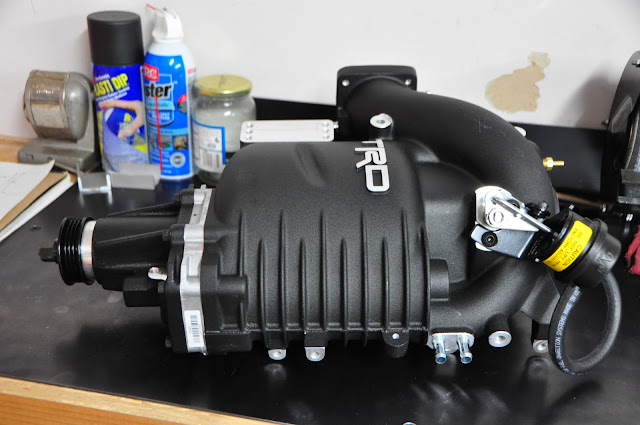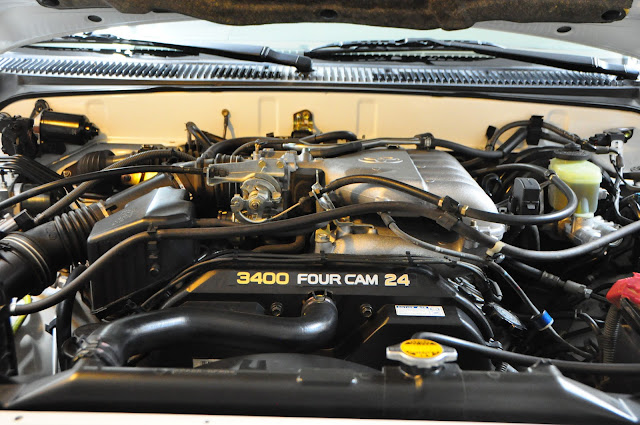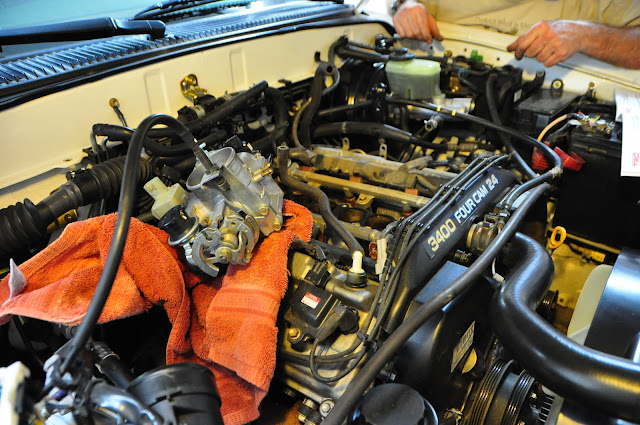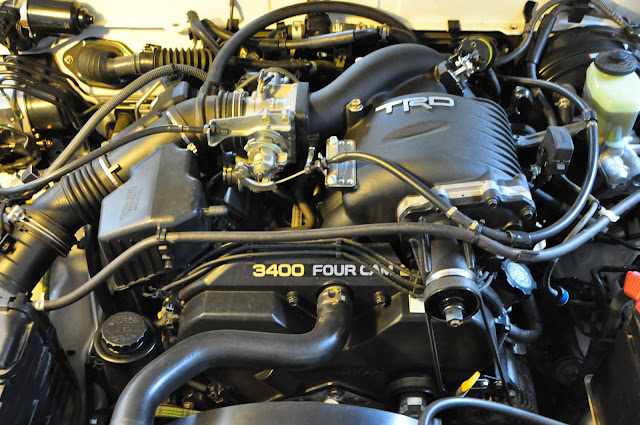-
Trekker

Re: paddlenbike's 2000 4Runner
Goal: Put contents of box on engine.

Yummy.

Pre-supercharger:

At its most torn-down state (this is an easy and fun project):

5.5 hours later, horsepower jumps from 183 hp to 265 hp:

This is my first supercharged vehicle, however I have owned four other turbocharged cars--a 2005 Subaru Outback 2.5XT, a 430 hp Toyota Supra Turbo and two turbo Volvos. Compared to a turbocharged vehicle, the supercharger makes instant horsepower and torque even at low RPMs (no turbo lag) and the supercharger is a self-contained unit with no external oil and coolant lines (which have leaked on every turbo car I have ever owned) and no intercooler plumbing to crowd the engine bay and reduce throttle response. The SC also does not add as much heat to the engine bay as a turbo. Finally, tuning is simpler since the boost is linear. You can even ziptie the bypass valve open if you want to run 87 octane fuel.
Disadvantages compared to a turbo? Hmm...technically it has more parasitic drag than a turbo, but with it's integrated bypass valve, Magnuson advertises the SC draws less than 1/4 of one horsepower in non-boost situations. There's also no turbo woosh and blow off valve sounds, just the whining of the supercharger impellers. There is also no way to intercool the TRD SC's air, but you can supplement with water or methanol injection for intake air charge cooling. Given all it's advantages, I'm sold on superchargers over turbos, but regardless, the world is a better place with forced induction. 
 Posting Permissions
Posting Permissions
- You may not post new threads
- You may not post replies
- You may not post attachments
- You may not edit your posts
-
Forum Rules








 Reply With Quote
Reply With Quote